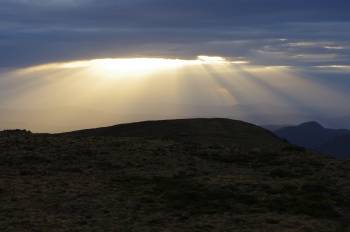I have lost track of the number of times I have stumbled into one of those ‘instagram is killing the places we love’ conversations but, after a busy summer in the mountains, its hard to ignore the ever growing numbers of people out on the trails. I saw this recently in Outside magazine:
If you’ve talked to any longtime outdoor enthusiasts in the last few years, you’ve probably heard some grumbling about how crowded the campsites are and how difficult it’s become to find trailhead parking. And they’ve probably attributed the uptick in popularity of outside activities to social media, where widely shared photos of beautiful sites draw crowds.
Personally, this has always struck me as some “kids these days”-style crotchetiness that ignores other reasons why someone may be drawn to a particular recreation area. But a new study from the National Academy of Sciences at least partially validates the old grumps’ position, finding a strong correlation between social media exposure and national park visitation.’
Anyone who walks in the high country knows that the loved places are getting much busier, right through the year. To take one example, the sheer volume of people who walk out across The Razorback to Mt Feathertop has grown so steadily that its possible to see 100 or more people camping around Federation hut. The parking snakes up around the corner from Diamantina hut towards the Loch carpark and is so sketchy that land managers and resort management will eventually need to come up with a solution. It’s the same story all over.
The Tasmanian National Parks Association (TNPA) recently said that it is concerned that bush walking has become ‘too popular for its own good. Overcrowding has become so bad at some locations at peak periods that it is ruining the experience for all involved (to say nothing of environmental impacts)’.
The TNPA welcomed the introduction by the Parks Service of a voluntary registration system in late 2021, but remains concerned that PWS needs to put more effort into making the system work effectively – especially into gathering data on actual walker behaviour (see here).
Most people understand the need for a registration system for the really popular spots. That has been the way it is for many years along the Overland Track (I only recently found out that there is now a booking system even for winter traverses of the Overland).
Of course its great that people are getting out into nature. The issue is how do we manage the growing numbers who are visiting the mountains?
A few thoughts
Shift your timing. Try to avoid busy periods, visit during the week. Go somewhere that isn’t on the short list of ‘top destinations’ (there is a lot of great country out there).
Don’t add to the pile on. When you find a special, fragile place, keep it a bit vague. Keep your sharing of such places to general rather than specific terms. Avoid specific details on where it is. You can visit Leave No Trace— Social Media Guidance for more information.
National parks and public lands require funding to be able to manage the rise in visitors. Support your local NGO which is campaigning for nature – likely to be a local National Parks Associations, who will be pushing for the Parks Service to get a fair share of funding to look after the places we love.
Join a group that does track management. Having good tracks in popular areas greatly reduces the direct environmental impacts of walking in the high country.
Stop commercial development in our parks. There are a range of groups organising against the plans to open up our conservation estate to commercial tourism ventures such as private hut networks.
Practise low impact camping. If it says No Fires, don’t light a fire! (hello people camping at Federation hut). Congregate at existing hardened campsites where possible. Clean up the junk others have left behind. Be engaged, take the initiative. Think about where your waste is going and look after the streams and rivers.
Respect the systems that are in place to manage numbers. Plan ahead, do the bookings, even if the systems are voluntary. Accept that there is responsibility that comes with the ‘Freedom of the Hills’.
Have fun out there.
























































June 5, 2024 at 8:52 pm
Great article, Cam! More power to your pooter! Mick Webster Chiltern